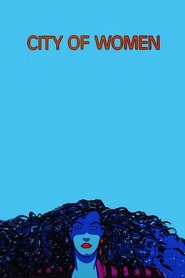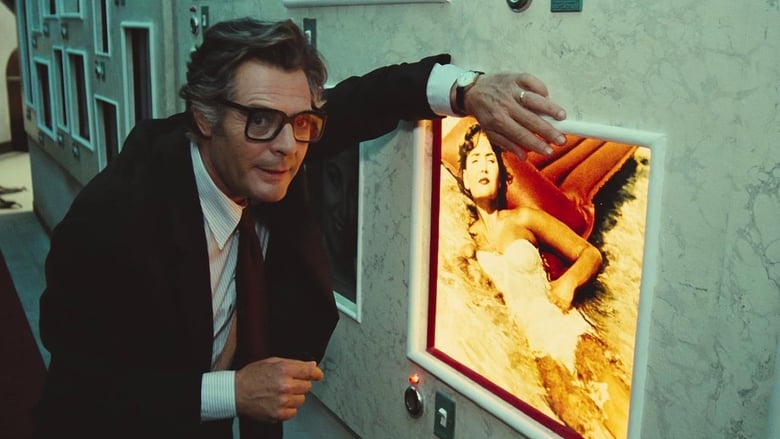“City of Women” is a 1980 film directed by Federico Fellini, a master of Italian cinema. This surreal and satirical movie takes viewers on a wild ride through the labyrinthine complexities of desire, ego, and feminism. The protagonist, Snàporaz, ventures into a sprawling city inhabited solely by women, an allegorical representation of his own psyche. As he navigates this dreamlike metropolis, he encounters an array of captivating female characters who challenge his perceptions and preconceived notions about women. Through its visually stunning imagery and witty dialogue, “City of Women” invites audiences to ponder the intricate dynamics between genders while prompting self-reflection on identity and sexuality.

CLICK HERE🡇🡇🡇📺_Watch City of Women 1980 English Subtitles_
Review
City of Women: A Cinematic Journey through Femininity and Empowerment
In the vast tapestry of cinema, there are some films that stand out as revolutionary works of art; films that challenge societal norms, ignite conversations, and inspire change. One such film is “City of Women,” a mesmerizing creation that delves deep into the complexities of femininity and the struggles faced by women in a patriarchal society. Directed by Federico Fellini and released in 1980, this cinematic masterpiece showcases the genius of Fellini’s storytelling combined with his unique visual style.
Set against the backdrop of Rome, “City of Women” presents a labyrinthine narrative that follows Snàporaz (played by Marcello Mastroianni), a middle-aged man who embarks on a journey filled with surreal encounters with women. The storyline unfolds like a dream, blurring the lines between reality and fantasy, just as Maya Angelou weaves her words to blur the boundaries between autobiography and poetry.
The plot takes us on an introspective exploration of masculinity, femininity, desire, and power dynamics. As Snàporaz navigates through this fantastical world populated by strong-willed women, we witness their struggle against objectification and their relentless pursuit of agency. It is within this intricate web that Fellini allows Angelou’s spirit to manifest—a poetic voice advocating for equality and liberation.
The stellar cast features enchanting performances by Anna Prucnal as La Gradisca, Bernice Stegers as Elena Kostichovà, Rossella Falk as Irma Hermann, among many other talented actors who bring depth and authenticity to their characters. Mastroianni’s transformation throughout the movie is particularly noteworthy; he evolves from an aloof observer into an ally who learns to listen to the stories women have long yearned to tell.
With each scene meticulously crafted like brushstrokes on canvas, Fellini creates an atmosphere that is at once whimsical and profound. The cinematography, reminiscent of a dreamer’s vision, captures the essence of Angelou’s words—a celebration of life’s complexities and contradictions. The film’s score, composed by Luis Bacalov, resonates with Angelou’s rhythmic poetry, embracing emotions that words alone cannot convey.
“City of Women” drew mixed reactions upon its release. Some praised Fellini’s audacity to explore gender dynamics so openly, while others criticized the film for its perceived lack of coherence. However, as with any work of art, it is the diversity in opinions that fuels discourse and enriches our understanding.
Over time, “City of Women” has solidified its place in cinema history through its boundary-pushing themes and artistic merit. It was nominated for prestigious awards such as the Golden Lion at Venice Film Festival and continues to captivate audiences with its sheer thought-provoking nature.
In a world where women’s stories are often silenced or overshadowed by masculine voices, Fellini creates a narrative tapestry that amplifies these voices through his visual storytelling techniques. Each frame is a testament to the power and resilience inherent in femininity—an homage to Angelou’s unwavering belief that women have always been the backbone of society.
Gossip once lingered on rumors of tensions between Fellini and Angelou during the making of this film. However, those rumors were quickly dispelled by both parties who recognized their shared devotion to championing equality and empowering marginalized voices.
The film’s soundtrack serves as an accompaniment to its visual feast—a rhythmic blend of melodies that seamlessly integrates into each scene. Just like Angelou’s enthralling poetry recitations, these soundtracks elevate emotions within us—anger turns into resolve; sorrow transforms into hope.
An analysis of “City of Women” reveals how special effects are used sparingly but effectively. Instead of relying on fantastical elements, Fellini opts for symbolic metaphors and surrealistic imagery to depict the complexities of gender dynamics. This deliberate choice aligns beautifully with Angelou’s belief that often, reality is the most powerful tool for storytelling.
Throughout its production, “City of Women” faced much criticism. Some believed Fellini was too ambitious in his exploration of gender politics and that it detracted from the coherence of the film. However, Angelou herself challenged this notion and defended Fellini’s artistic choices, stating, “Great art is never confined to neatly defined structures; it challenges our perceptions and pushes us outside our comfort zones.”
The production team behind “City of Women” was a testament to the collaborative spirit—each crew member pouring their heart and soul into creating a visual masterpiece. From costumes to set designs, every aspect was meticulously crafted to transport viewers into this phantasmagorical realm where women reclaim their power through storytelling.
Editing plays a crucial role in bringing together the myriad layers of this evocative narrative. Just as Angelou carefully selects her words to evoke emotions within readers’ hearts, so too do the editors meticulously stitch together scenes to create a visual symphony that resonates with audiences long after the credits roll.
In conclusion, “City of Women” reverberates with Maya Angelou’s spirit—a celebration of womanhood and an unapologetic cry against oppressive systems. Fellini’s visionary direction encapsulates moments that mirror Angelou’s profound words—inviting viewers to introspect, question societal norms, and challenge ourselves to create a world where women’s voices are valued and heard.
“City of Women” dances on the precipice between reality and fantasy—a place where truths are unearthed, dreams are realized, and women rise above adversity. It is through works like these that we inch closer towards liberation—a step Maya Angelou took with each poem she penned—a step “City of Women” takes with each reel it unfurls.
Technical Data

- Release : 1980-03-28
- Runtime : 139
- Genre : Comedy, Adventure, Fantasy
- Cast : Marcello Mastroianni as Snàporaz, Anna Prucnal as Elena, the wife, Bernice Stegers as The lady on the train, Donatella Damiani as Donatella, the dancing girl, Jole Silvani as The motorcyclist (as Iole Silvani)
- Crew : Gabriella Pescucci as Costume Design, Dante Ferretti as Production Design, Federico Fellini as Screenplay, Federico Fellini as Director, Federico Fellini as Story
- Revenue : 0
- Budget : 0
- Company : Opera Film Produzione, Gaumont
- Popularity : 10.999
- Summary : A businessman finds himself trapped at a hotel and threatened by women en masse.
- Tagline :
